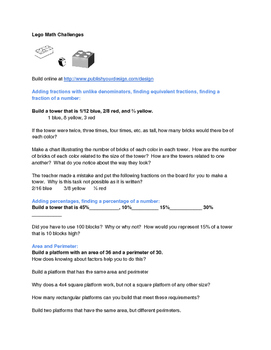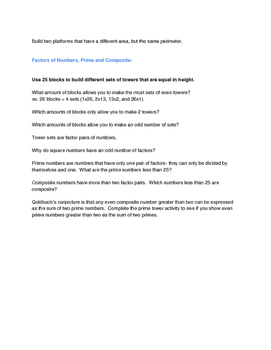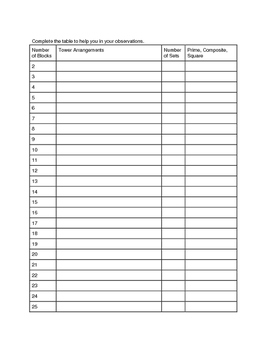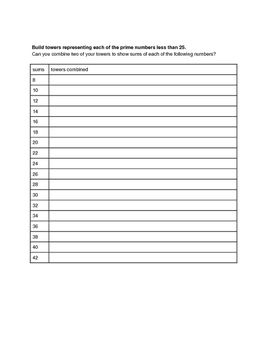Lego Math Challenges
Becky Renegar
13 Followers
Grade Levels
4th - 6th
Subjects
Resource Type
Standards
CCSS4.MD.A.3
CCSS4.OA.B.4
CCSS5.NF.A.1
CCSS6.RP.A.3c
Formats Included
- PDF
Pages
5 pages
Becky Renegar
13 Followers
Description
These five math challenges engage students using Lego bricks to build towers, models, and solve problems. Challenges address a variety of upper elementary and middle school math skills including:
- adding fractions with unlike denominators
- finding equivalent fractions
- finding a fraction of a whole
- adding percentages
- finding a percentage of a whole
- area and perimeter
- factors
- prime numbers
- composite numbers
- Goldbach's conjecture
- multiplication
- scale factor
- proportional relationships
- conversion within a measurement system
- solving multi-step problems
- operations with decimals
The tasks involve provide students with a physical application of the mathematics they are learning and a visual representation of some challenging math concepts.
- adding fractions with unlike denominators
- finding equivalent fractions
- finding a fraction of a whole
- adding percentages
- finding a percentage of a whole
- area and perimeter
- factors
- prime numbers
- composite numbers
- Goldbach's conjecture
- multiplication
- scale factor
- proportional relationships
- conversion within a measurement system
- solving multi-step problems
- operations with decimals
The tasks involve provide students with a physical application of the mathematics they are learning and a visual representation of some challenging math concepts.
Total Pages
5 pages
Answer Key
Not Included
Teaching Duration
3 hours
Report this resource to TPT
Reported resources will be reviewed by our team. Report this resource to let us know if this resource violates TPT’s content guidelines.
Standards
to see state-specific standards (only available in the US).
CCSS4.MD.A.3
Apply the area and perimeter formulas for rectangles in real world and mathematical problems. For example, find the width of a rectangular room given the area of the flooring and the length, by viewing the area formula as a multiplication equation with an unknown factor.
CCSS4.OA.B.4
Find all factor pairs for a whole number in the range 1-100. Recognize that a whole number is a multiple of each of its factors. Determine whether a given whole number in the range 1-100 is a multiple of a given one-digit number. Determine whether a given whole number in the range 1-100 is prime or composite.
CCSS5.NF.A.1
Add and subtract fractions with unlike denominators (including mixed numbers) by replacing given fractions with equivalent fractions in such a way as to produce an equivalent sum or difference of fractions with like denominators. For example, 2/3 + 5/4 = 8/12 + 15/12 = 23/12. (In general, 𝘢/𝘣 + 𝘤/𝘥 = (𝘢𝘥 + 𝘣𝘤)/𝘣𝘥.)
CCSS6.RP.A.3c
Find a percent of a quantity as a rate per 100 (e.g., 30% of a quantity means 30/100 times the quantity); solve problems involving finding the whole, given a part and the percent.





